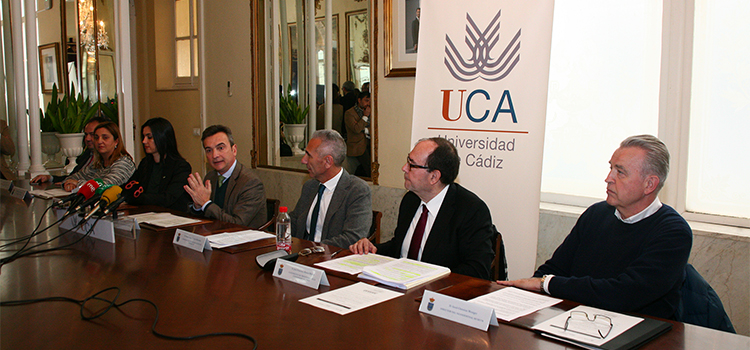Researchers from UCA participate in an international investigation that manages to date cave art in the Iberian Peninsula 66,700 years ago 22 February 2018
The scientific journal ‘Science’ publishes today the results of this interdisciplinary project, which has the authorship of researchers from five countries and reveals the origin of art by Neanderthals in the world
Researchers from the University of Cádiz and the Neanderthal Museum of Mettmann (Germany) have led an interdisciplinary and international research that has included scientists from universities and research centers in five countries (Spain, Portugal, France, United Kingdom and Germany) that has managed to date cave art of Neanderthal origin in the Iberian Peninsula 66,700 years ago, that is, twenty thousand years before the dates hitherto known. This transcendent scientific finding was published today in the prestigious journal Science that includes, in its latest issue of February, the results of the research line that, through the analysis method of Thorium Uranium (U/Th), has allowed the dating of samples milligram size of calcite deposits existing below and above paintings in three Spanish caves (Ardales in Málaga, Maltravieso in Cáceres and La Pasiega in Cantabria) and reveal, consequently, the origin of art by Neanderthals in the Peninsula Iberian.
The works of the researchers from the University of Cádiz and the Neanderthal Museum have focused on the caves of Ardales and the Sima de las Palomas from Teba (Malaga), through investigations that began in 2015, with the authorization of the Junta de Andalucía and in collaboration with the municipalities of Ardales and Teba (Málaga), thanks to the General Research Project (PGI) The prehistoric societies (from the Middle Paleolithic to the Final Neolithic) in the Cave of Ardales and Sima de las Palomas from Teba (Malaga, Spain). Geoarchaeological, chronological and environmental study.

The results of this interdisciplinary team (formed by archaeologists, historians, geologists or chemists) and international in the caves of Ardales, La Pasiega and Maltravieso through the use of Uranium series have been published today in the scientific article U-Th Dating of the carbonated crusts reveals the Neanderthal origin of the cave art (U-Th dating of carbonate crusts reveals Neanderthal origin of Iberian cave art) in the prestigious international magazine Science, where new dates are exposed to cipher the origin of art by the Neanderthals in the Iberian Peninsula. In this way, the oldest Palaeolithic cave art in Europe and the world has been documented, certifying that the origin of art should be traced back to at least 65,000 years ago.

Precisely, two of the co-editors of the article and co-directors of the PGI, the professor of Prehistory of the University of Cádiz, José Ramos, and the director of the Neanderthal Museum, Gerd Weniger, in the company of the rector of the University of Cádiz, Eduardo González Mazo, and of the Minister of Culture of the Junta de Andalucía, Miguel Ángel Vázquez, the Secretary General of the Ministry of Culture and Equality of the Junta de Extremadura, Miriam García, the Mayor of Ardales (Málaga), María del Mar González, accompanied by the Vice Chancellor of Research of UCA, Casimiro Mantell, have valued today, without detailing or advancing the contributions published by the Science journal, what these works mean for the history of art and humanity.
In addition, the rector and minister announced that soon the University of Cadiz and the Junta de Andalucía will cooperate in projects on cave art in Andalusia within the framework of the future Law of Historical Heritage from the completion of a study on southern cave art.




